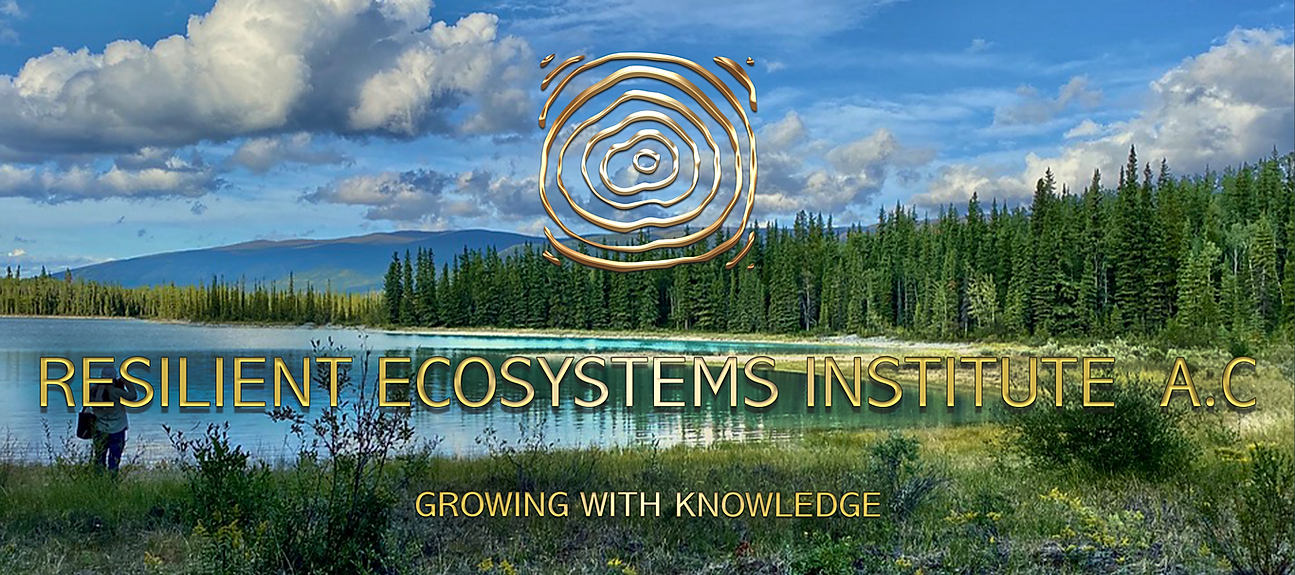

Environmental Action Plan for Resilient Ecosystems Institute A.C.
At Resilient Ecosystems Institute, we are dedicated to creating a regenerative system that fosters environmental sustainability and ecological restoration. Our comprehensive environmental action plan encompasses various initiatives aimed at restoring ecosystems, conserving water resources, promoting sustainable energy practices, and minimizing waste. Here's a detailed overview of our efforts:
1. Ecological Restoration of the Tropical Dry Forest Ecosystem:
- We embarked on a mission to restore the 39-hectare property, which had been degraded due to cattle ranching activities.
- Through meticulous research and collaboration with local communities, we implemented restoration techniques, including seed collection, nursery establishment, and tree planting.
- Our ongoing efforts have led to the revitalization of the forest, attracting diverse wildlife and transforming the area into a thriving ecosystem.
2. Wildlife Ponds:
- We constructed wildlife ponds to provide essential water sources for wildlife in the Yucatan region, where water scarcity is prevalent.
- These ponds serve as vital habitats for various species and contribute to the restoration of biodiversity in the area.
3. Mentoring and Research:
- We actively mentor individuals interested in ecological restoration, regenerative agriculture, and biodiversity conservation.
- Through collaboration with research students, we continually improve our restoration processes and techniques.
4. Water Conservation:
- Water conservation is a top priority at Earth Connection Center, especially during the dry season.
- We utilize sustainable water management practices, including groundwater pumping, rainwater harvesting, and greywater filtration.
- Our efforts to minimize water waste and maintain water quality contribute to the health of our ecosystems and surrounding communities.
5. Sustainable Energy Practices:
- We harness renewable energy sources, including solar and wind power, to meet our energy needs.
- Our energy-efficient appliances and practices ensure minimal environmental impact and promote long-term sustainability.
6. Waste Minimization and Recycling:
- We implement strategies to minimize waste generation and promote recycling throughout our operations.
- By segregating and repurposing waste materials, including paper, plastic, glass, and organic matter, we strive to reduce our ecological footprint.
7. Transportation and Lifestyle Choices:
- We prioritize sustainable transportation options, such as carpooling and minimizing trips to reduce fuel consumption.
- Our commitment to mindful consumption and eco-friendly practices extends to our daily lifestyle choices, including diet and purchasing habits.
8. Community Engagement and Education:
- Through our Planet Healers YouTube Channel and other educational initiatives, we share our knowledge and experiences to inspire global environmental stewardship.
- We actively engage with local communities to raise awareness and foster a culture of sustainability and conservation.
Join Us in Our Ecosystem Mission!
At Resilient Ecosystems Institute A.C., we believe that every action counts in preserving and restoring our planet's ecosystems. Together, we can make a meaningful difference in creating a sustainable future for generations to come.